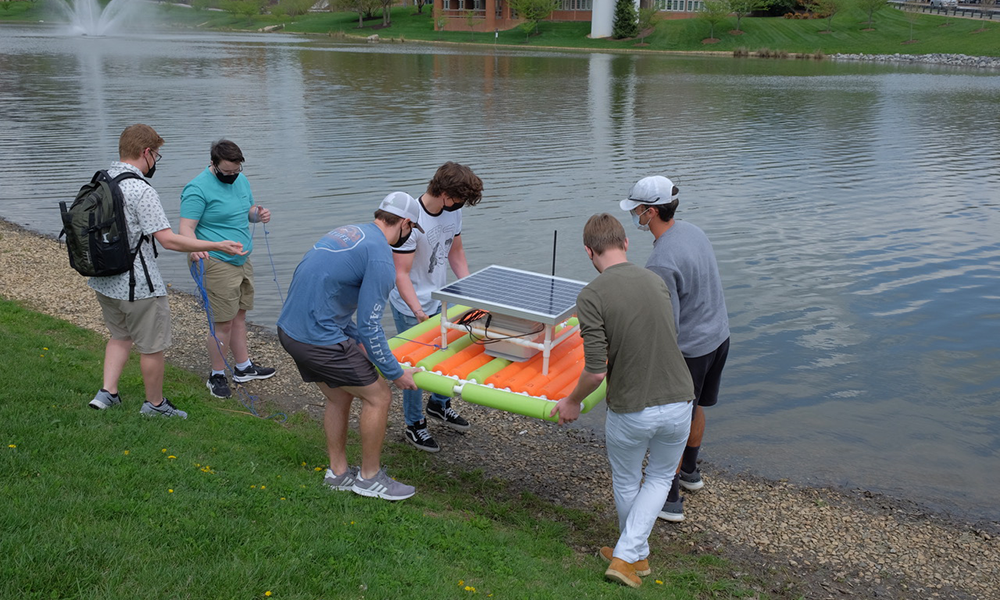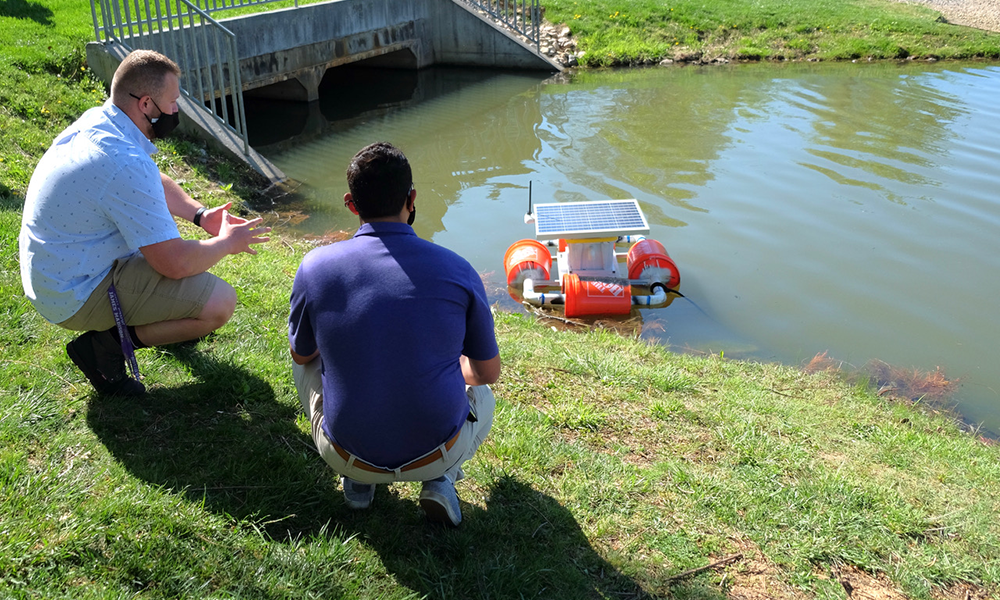Chesapeake Bay, sea turtles could benefit from engineering projects
JMU News
Photos by Robert Nagel
Second-year engineering students at James Madison University have been busy designing a buoy this year in hopes of providing some low-cost solutions for protecting the environment.
When deployed with one sensor package, the buoy could help the Chesapeake Bay Foundation monitor the health of the bay via acoustic signatures. With a different sensor package, the buoy could help the Brevard Zoo monitor the migration of leatherback sea turtles off the coast of Florida.
“There are products on the market, but they’re expensive,” said engineering professor Robert Nagel. “We’re trying to build something that is less than $1,200.”
All the materials for the buoys can be purchased off the shelf, Nagel said.
The buoy projects came about through a new partnership with Northrop Grumman Corp. Before this year, the sophomore class was responsible for designing human-powered vehicles – essentially modified bicycles – for clients with mobility challenges. Along the way, the students learned how to interact with a client, determine the client’s needs and then design and build a solution. At the end of each year, various concepts were judged and the winning team presented their solution to the client.
The COVID-19 pandemic created challenges for that project, including not being able to meet face to face with the client and not being able to build the final product. In need of something else for this year’s class, Nagel reached out to companies with JMU connections. At Northrop Grumman, Nagel contacted 2016 JMU engineering alum Joshua Kay, who was able to make connections resulting in this year’s project.

The buoy projects have required the students to work on various teams to complete certain aspects, such as communications (the buoys have to relay data), energy harvesting (the buoy communications and sensing systems will be powered by solar energy), and building the buoy. Challenges have included buoyancy, errant force loads that could cause the buoys to capsize, water and weatherproofing, and dealing with salt spray on solar panels.
Much of the work has been completed online using a variety of software that enables the student teams to meet and share their work virtually. Several weeks ago, the teams were able to return to the design studios to build prototypes and to test them.
By the end of the semester, just two weeks away, the students will be graded on their concepts and how well they meet the goals the teams set at the beginning of the year.
# # #
Media contact: Eric Gorton, gortonej@jmu.edu, 540-908-1760.
